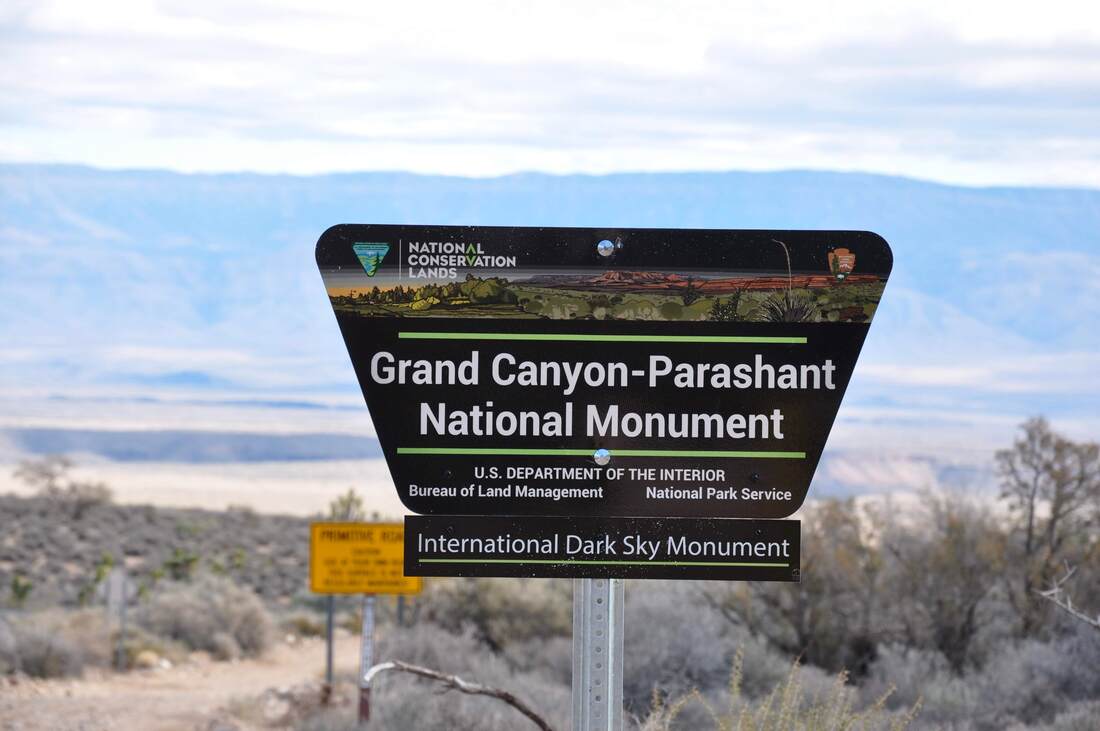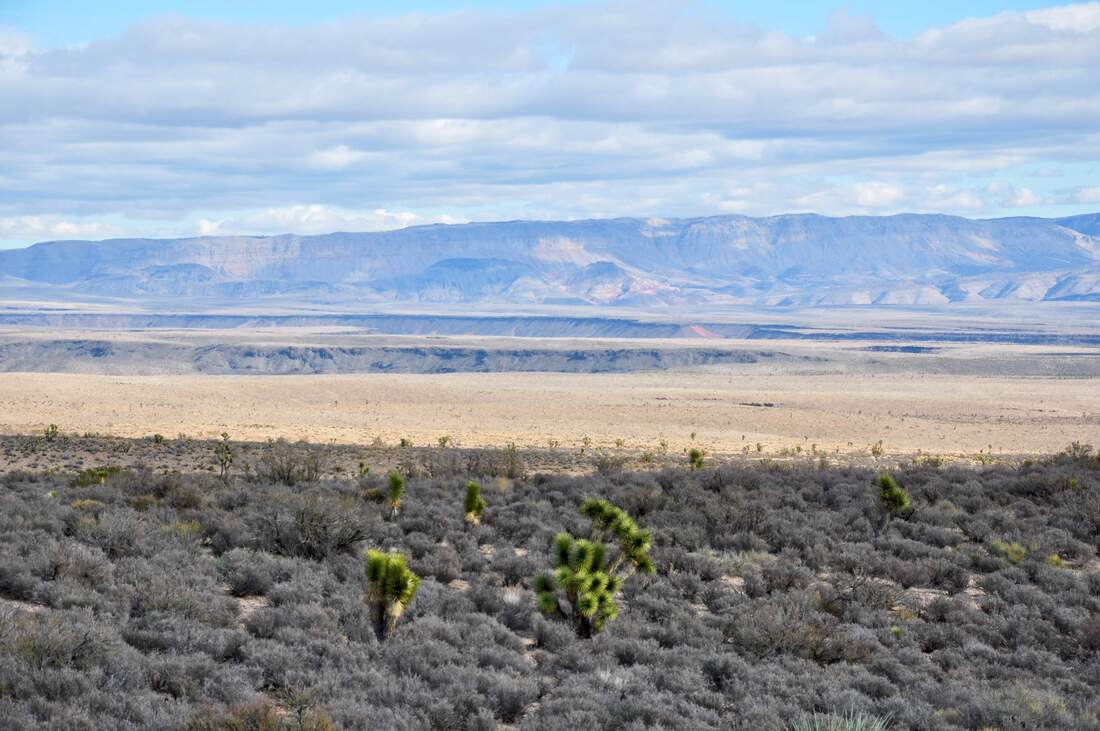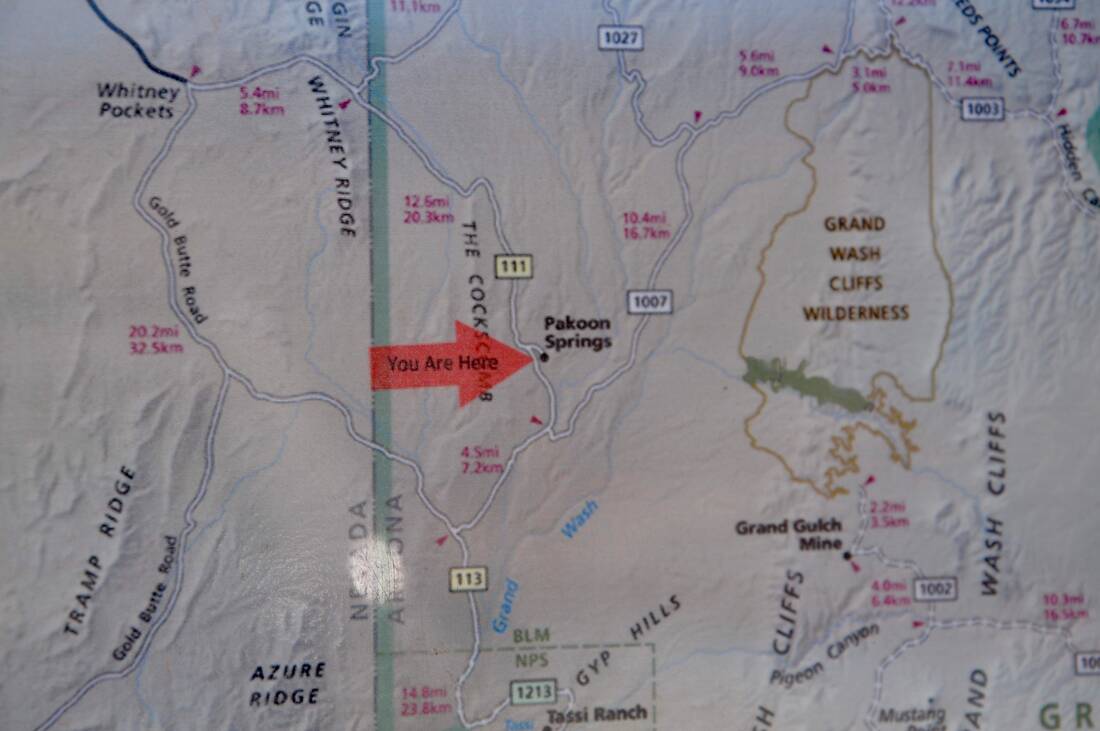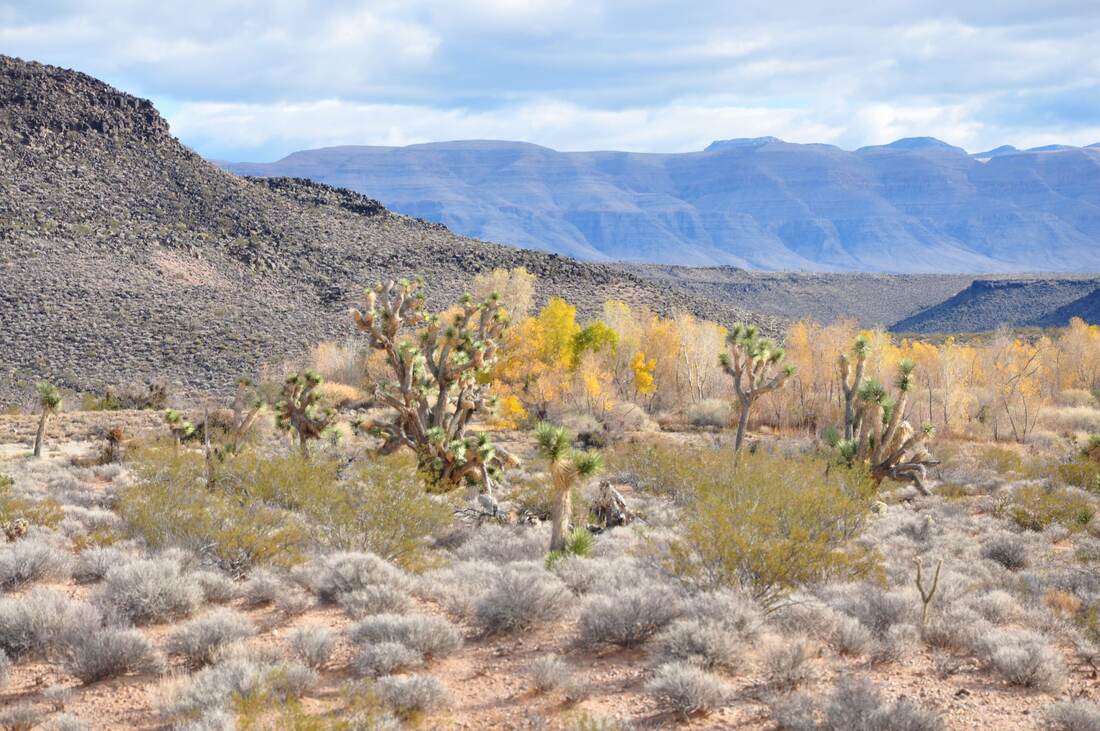|
Driving the dirt roads in the Southwest is the best way to experience majestic places that few others get the opportunity to see. There actually are far more dirt roads than paved roads in the western public lands, so those who drive a capable vehicle will find better opportunities to escape from the crowds. Some of the long dirt roads go to desolate places where visitors will truly be on their own with little hope for rescue, so getting prepared for the trip is essential for ensuring a safe journey. Navigating the Back Country Byways of the west can also be a challenge in itself, because many mapping systems do not detail the dirt road names. As can be imagined, a long dirt road venture in the west does require careful planning and preparation in order to make the trip a memorable one. There are no paved roads in the Grand Canyon Parashant National Monument and a visitor will have to travel over at least 30 miles of rough dirt roads just to get to the border of this vast wilderness area. The location of the closest gas stations also add another 15 or 20 miles to the trip. The Grand Canyon Parashant covers way over one million acres of land, so when the mileage for a trip into this place is calculated, a short round trip venture can easily add up to over 100 miles. If the four wheel drive option is used for this slow going trip, the gas mileage will be reduced and this has to be figured into the gas mileage equation. Allotting a spare amount of fuel for wrong turns and getting lost will also be necessary. After the math is all done, it is easy to see that fuel management is critical in the Grand Canyon Parashant. Therefore, the rule of thumb for touring the Grand Canyon Parashant is to top off the tank for a short trip or carry an extra five to ten gallons for a long round trip. Carrying one or two extra spare tires is advisable too. The total mileage for a round trip from Mesquite, Nevada to Pakoon Springs in the Grand Canyon Parashant is just about 100 miles. Mesquite is the most popular basecamp for adventures in Gold Butte National Monument and the neighboring Grand Canyon Parashant, because this town is where the closest gas stations can be found. The Pakoon Springs round trip can be done on one tank of gas with most 4×4 vehicles, even if an extra 50 miles of sightseeing is added to the ride. There are several previously published articles that can be found in this website’s index pages that describe the dirt roads to Whitney Pocket, Aravada Springs and an alternate route back to Mesquite from the Grand Canyon Parashant through the mountains. After surviving the long bumpy ride on the dirt roads through Gold Butte to Aravada Springs, the rest of the trip will seem easy. The Aravada Springs intersection signage is easy to decipher and the correct road to choose is the one that heads southeast into the Grand Wash. On a map, this road shows up as County Road 111 or Pakoon Springs Road. From this point on, all that a visitor has to do is follow the CR 111 signs to get to Pakoon Springs. From Aravada Springs, it is an easy going ride on a gradual downhill slope to the Pakoon Basin. The views of the Grand Canyon Parashant from the high elevations in this area are as picturesque as can be. The road goes through a few Joshua Tree forests on the way to the low elevation basin, which is actually part of the Grand Wash. The Grand Wash is basically a gigantic dry wash where rainwater flows from southwest Utah downhill to the Colorado River. The landscape in this area has many fault line ridges, tall bordering mountains and there are a few old volcano cinder cones to be found. Massive amounts of erosion over eons of time has carved the pale sandstone and red rock outcrops in this region, so the terrain is quite interesting to see. The influence of the Grand Wash becomes more evident when heading south on Pakoon Springs Road in the low elevations. Huge polished round boulders can be seen near the Grand Wash Basin, which provide a clue as to how powerful the flash floods can be in this area. The Pakoon Basin and the Grand Wash definitely are a dangerous place to be if rain is in the forecast, so it is best to delay the trip if gray clouds are expected. Summer season trips into the Grand Canyon Parashant are not recommended because of the extreme heat. Summer is also when the monsoon rainstorms occur and these storms can happen with little warning, so it is best to head for the high ground before the first few drops of rain hit the ground. The long dirt road to Pakoon Springs sure is a scenic one and there are many good photo opportunities along the way. The word Parashant actually translates to “elk standing in water” in the Paiute language, so there is some wildlife to be seen in this region. During the early daytime hours, the wild burros are the easiest animals to spot, especially near any source of water. I spotted a couple of wild burros while cruising along and I later saw the fresh burro footprints at Pakoon Springs, so this destination is a good choice for viewing wild burros out in the desert! The landmarks are few and far between in the Grand Canyon Parashant, so Pakoon Springs is as good of a choice as any for a scenic dirt road destination. Pakoon Springs does have good signage and the entranceway is an ATV staging area. Even without signage, Pakoon Springs is easy to spot, because cottonwood trees are usually found at a source of water in this part of the desert and the cottonwoods at Pakoon Springs look obvious in this desolate expanse. For those who are thirsty, the Pakoon Springs are fenced off. There are no warning signs posted around this natural freshwater spring, but how safe the water is to drink is questionable. A large portion of the Grand Canyon Parashant was contaminated by uranium mining operations long ago, so the silent killer does exist in this region. Many of the freshwater springs in the Grand Canyon Parashant and the entire section of the Colorado River that runs through this National Monument are contaminated with radioactive waste materials. It is best to not even think about drinking the local ground water or Colorado River water, even in a survival situation. The radioactive water situation in the Grand Canyon Parashant does give credence to being prepared. By packing plenty of water, a visitor will be ready if a survival situation arises. As can be imagined, a trip into the Grand Canyon Parashant can be a dangerous one, but with forethought and preparedness the trip can go off without a hitch. The Grand Canyon Parashant is one of the last unspoiled wilderness areas left in the west and few people dare to venture into this desolate place. For those who want to experience Mother Nature at her finest while escaping from the big crowds, the Grand Canyon Parashant definitely is the place to go. The trip from Aravada Springs to the landmark Pakoon Springs is a fairly easy one to accomplish, so even a beginner can do the trip in a capable high ground clearance vehicle. From Pakoon Springs, the next leg of the journey goes all the way into the Grand Wash and that trip is quite a bit more difficult to do!
0 Comments
Your comment will be posted after it is approved.
Leave a Reply. |
Leave no trace!
New!
Destination West YouTube channel! https://www.youtube.com/@DestinationWestOrg *The Destination West website upgrading project is well underway. Unique YouTube slideshows are replacing the outdated Flickr photo galleries. The new videos feature modern graphics and alternative music instrumentals that enhance the viewing experience. Some articles are being condensed, while others are getting much needed edits. As everybody knows, the bulk of the original articles and photos were published on the fly during the Covid camping venture and there were limitations. Upgrading is the way to go and more articles will receive a makeover each week until this project is completed. After that, I will be able to gather new material. There is light at the end of the tunnel!
JD Lane Archives
July 2024
Donations help the Destinaton West project continue into the future!
Go Fund Me! This website uses marketing and tracking technologies. Opting out of this will opt you out of all cookies, except for those needed to run the website. Note that some products may not work as well without tracking cookies. Opt Out of Cookies |
























